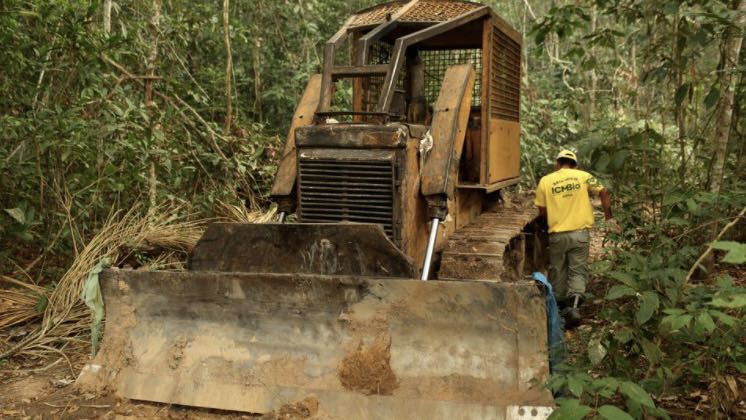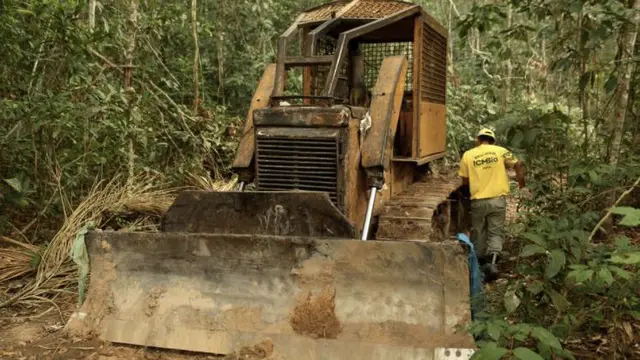
In 2010, more than 190 countries pledged to protect global biodiversity to prevent future pandemics and slow the pace of climate change by meeting 20 targets by 2020. But governments have met only one target, and its "quality" remains poor, the United Nations (UN) said on Wednesday.
Countries have successfully implemented target number 11 for protected and conserved areas, which aimed at protecting 17 percent of the land and inland waters and 10 percent of the marine environment.
According to the biennial UN Protected Planet Report, governments conserved around 16.64 percent of the land and inland water ecosystems and 7.74 percent of the marine environment in the last 10 years.
The efforts have led to the addition of an area of 21 million square kilometers – the size of the Russian Federation – under the conservation network.
"Protected and conserved areas play a crucial role in tackling biodiversity loss, and great progress has been made in recent years on strengthening the global network of protected and conserved areas," said Neville Ash, director of the UN Environment Programme-World Conservation Monitoring Centre.
The biodiversity loss has led to a devastating impact on the core habitats of wild animals with the construction of mega infrastructure projects like highways and ports scarring ecologically sensitive hotspots. Pollution also contributed to the degradation.
Such destruction and rampant wildlife trade have increased the interaction between wild animals with humans, triggering possibilities of zoonotic diseases – transmission of viruses from animals to humans.
In the last few decades, increased interactions and rampant illegal wildlife trade have led to catastrophic viral outbreaks, including Ebola, MERS, SARS and the ongoing COVID-19 pandemic.
Quantity vs. quality
The report also highlighted that an increase in the size of the protected and conserved area has not translated into providing benefits to humans or nature as most protected areas remain disconnected.
The challenge is to "improve the quality of both existing and new areas to achieve positive change for people and nature, as biodiversity continues to decline, even within many protected areas," the report said.
According to the prescribed standards, protected and conserved areas should be better connected, allowing species, especially migratory animals, to move around freely.
At present, less than 8 percent of the land is both protected and connected – far below 17 percent of the land area that is now under protection, the report said. It also highlighted the need for recognizing and documenting the efforts of indigenous peoples, local communities and private entities towards conserving natural areas.
"Designating and accounting for more protected and conserved areas is insufficient; they need to be effectively managed and equitably governed if they are to realize their many benefits at local and global scales and secure a better future for people and planet," said Neville Ash.
Hopes of ambitious biodiversity targets at COP 15 hosted by China
Depleting biodiversity raised concerns among governments and conservation organizations, prompting them to meet in Japan to formulate the Aichi Targets. During the meeting, governments, in a landmark decision, pledged to meet 20 conservation goals by 2020.
Last year, an assessment of the targets by the UN Convention on Biological Diversity (CBD) found that countries failed to achieve most of them fully. Some were partially met, including target number 11. As a result, more than one million animal and plant species are now threatened with extinction, many within decades, more than ever before in human history, the report warned.
Governments will again meet for the Conference of Parties (COP-15) at Kunming in China, delayed by a year due to the COVID-19 pandemic, to prepare new goals for post-Aichi 2020 goals.
"As biodiversity continues to decline, we now call for Parties at the UN Biodiversity Conference in Kunming to set an ambitious target," said Dr Bruno Oberle, director-general of the International Union for Conservation of Nature.
Governments should ensure protected area coverage of 30 percent of the land, freshwater and ocean by 2030, Oberle added.
(Cover: A member of the Chico Mendes Institute for Biodiversity Conservation walks next to a tractor used for deforestation at the National Forest Bom Futuro in Rio Pardo, Rondonia State, Brazil, September 13, 2019. /Reuters)
 简体中文
简体中文

